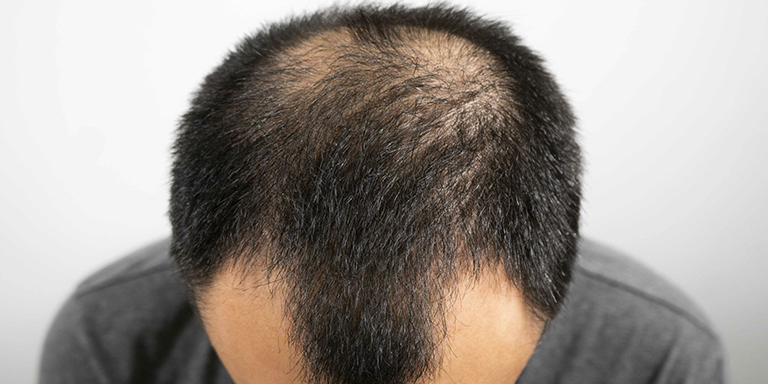Losing hair is never easy, especially when it’s androgenetic alopecia—a condition driven by genetics and hormones. Commonly known as male or female pattern baldness, it affects millions globally, causing gradual hair thinning and receding hairlines. Many seek hair restoration as a possible solution, but is it truly effective? Let’s explore the science behind it, available treatments, and what actually works.
Understanding Androgenetic Alopecia
Androgenetic alopecia is a hereditary condition caused by sensitivity to dihydrotestosterone (DHT), a hormone derived from testosterone. Over time, DHT weakens hair follicles, leading to shorter growth cycles and thinner hair strands. Eventually, follicles shrink and stop producing visible hair.
How It Affects Men and Women?
- Men experience a receding hairline and bald spots on the crown, progressing in an M-shape.
- Women see diffused thinning across the scalp, with the hairline generally preserved.
- The condition is progressive, meaning it worsens without treatment.
Since early intervention can slow hair loss, many turn to hair restoration options, ranging from medications to surgical procedures.
Hair Restoration: What Are the Options?
Hair restoration includes surgical and non-surgical treatments, each with varying effectiveness.
1. Hair Transplant Surgery
A permanent solution where hair follicles from the back or sides of the head (donor area) are implanted into bald areas. The two main techniques are:
- Follicular Unit Extraction (FUE)—Individual follicles are extracted and transplanted. Minimally invasive with faster recovery.
- Follicular Unit Transplantation (FUT)—A strip of scalp is removed, follicles are extracted, and transplanted. Higher graft yield but leaves a linear scar.
Best for: Those with stable hair loss and a healthy donor area.
Limitations: Costly, requires surgery, and results take months to appear.
2. Platelet-Rich Plasma (PRP) Therapy
A non-surgical option where growth factors from a patient’s own blood are injected into the scalp to stimulate follicles.
Best for: Early-stage hair loss, post-transplant recovery.
Limitations: Requires multiple sessions, works better as a complementary treatment.
3. Medications (Minoxidil & Finasteride)
- Minoxidil (Rogaine) – A topical solution that prolongs hair growth cycles. Helps slow down hair loss and promote regrowth.
- Finasteride (Propecia) – An oral DHT-blocker that prevents follicle shrinkage. More effective in men than women.
Best for: Mild to moderate hair loss, maintenance therapy.
Limitations: Results stop if discontinued, potential side effects.
4. Low-Level Laser Therapy (LLLT)
Uses red light wavelengths to stimulate follicles and improve blood circulation in the scalp.
Best for: Early-stage hair thinning, adjunct therapy.
Limitations: Takes months to show results, moderate effectiveness.
Read More – Pros and Cons of a Hair Transplant Surgery
How Effective Is Hair Restoration for Androgenetic Alopecia?
Effectiveness varies based on treatment type and individual factors.
- Hair transplants offer permanent, natural-looking results, but require sufficient donor hair.
- Medications like Minoxidil & Finasteride help slow hair loss and regrow some hair but need lifelong use.
- PRP & LLLT can enhance scalp health and improve existing hair but don’t regrow lost follicles.
The best approach often involves combining treatments—for example, a hair transplant with PRP therapy or medications with LLLT.
Factors Affecting Treatment Success
Not all treatments work the same for everyone. Several factors influence success rates:
- Age & Stage of Hair Loss – Earlier intervention leads to better outcomes. Once follicles are completely gone, only a transplant can restore hair.
- Genetics & Hormonal Influence – If hair loss runs in the family, managing DHT levels becomes crucial.
- Scalp Condition & Lifestyle – Poor scalp health, stress, and an unbalanced diet can slow progress.
- Consistency in Treatment – Many options require ongoing care to maintain results.
Who Is an Ideal Candidate for Hair Restoration?
- Best suited for: Individuals with stable hair loss, sufficient donor hair (for transplants), and realistic expectations.
- Not ideal for: People with advanced baldness (complete scalp loss), certain medical conditions, or unwillingness to commit to maintenance treatments.
Risks & Limitations
While hair restoration can be effective, it’s essential to consider potential risks:
- Hair Transplant Risks – Temporary swelling, scarring, or infection (though rare with an experienced surgeon).
- Medication Side Effects – Minoxidil may cause scalp irritation; Finasteride can lead to reduced libido in some men.
- PRP & LLLT Limitations – Not all patients respond well; results can be subtle and require multiple sessions.
Conclusion: Is Hair Restoration Worth It?
Hair restoration can be an effective solution for androgenetic alopecia, but success depends on choosing the right treatment based on the stage of hair loss. Hair transplants offer the most permanent results, while medications and PRP therapy help maintain and strengthen hair.
If you’re experiencing hair loss, consult a trichologist or dermatologist to discuss the best-suited options, like Hair Transplant Surgery in Delhi. The earlier you act, the better your chances of retaining and regrowing healthy hair. Book your appointment now!

